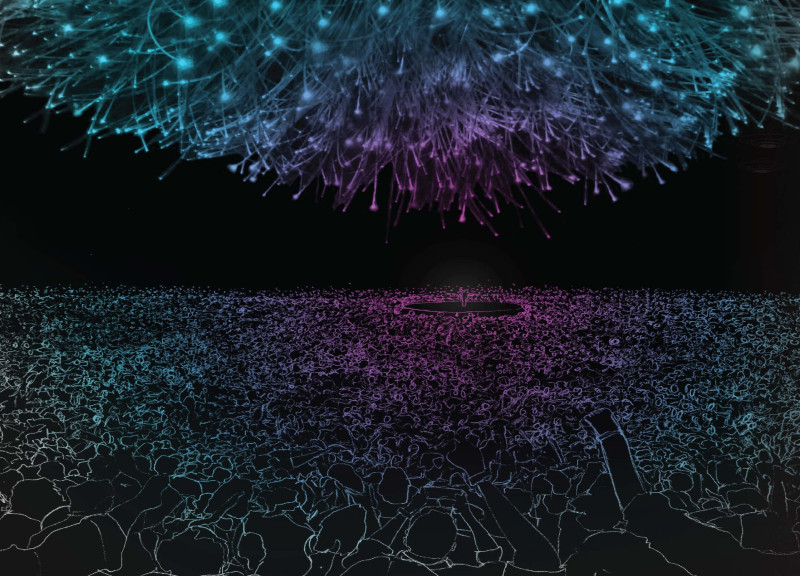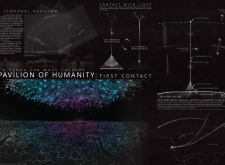5 key facts about this project
The First Contact Pavilion is a new structure designed to serve as a portable venue for cultural events. It orbits in geosynchronous space, giving it the ability to be relocated along the equator as needed. The design emphasizes flexibility and movement, allowing the pavilion to tune itself to various gatherings and audiences. This approach integrates modern engineering ideas to create a space that meets diverse cultural needs.
Structural Framework
The pavilion features a tether system that supports its movement and deployment. A probe prepares to move the tether and counterweight to specific locations when needed. After arriving at a designated spot, the system connects back to the ground using an anchoring mechanism. This design allows for quick adjustments while ensuring the pavilion remains stable and serviceable.
Lighting and Information System
One of the main features of the pavilion is its fiber optic array, which transmits light and data. This system enhances cultural events by using light to create a dynamic atmosphere for audiences. The fiber optics allow for clear and efficient communication, ensuring that performances are brought to life in a captivating way. This interaction enriches the visitor experience.
Materials
Carbon fiber is used for the tether system, which contributes to the lightness and strength needed for the pavilion's orbital function. The fiber optic cables are also significant in enabling advanced lighting systems, playing a crucial role in the overall performance of the pavilion.
The combination of principles from space exploration and architecture results in a unique structure that encourages engagement across various cultural contexts. The pavilion's design allows it to adapt to different locations, meeting the needs of diverse audiences while showcasing advancements in materials and technology. Its ability to function well in different settings emphasizes its practical effectiveness in bringing people together for cultural experiences.



















































